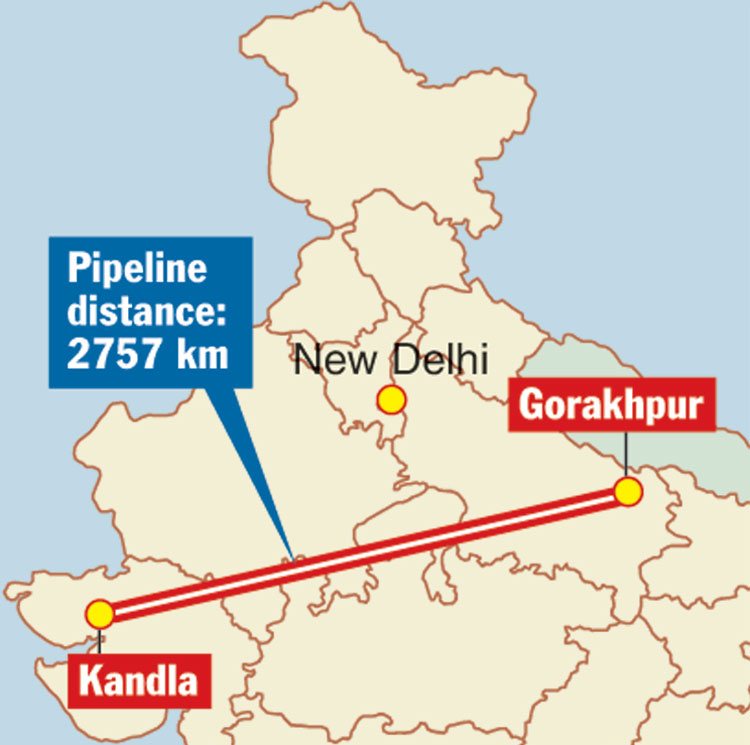Oil PSUs BPCL and HPCL will take 25 per cent each in Indian Oil’s Rs 9,000-crore pipeline from Kandla to Gorakhpur, which on completion will be the country’s largest LPG pipeline and will meet the cooking fuel needs of one-fourth of the country’s population.
“IOC, BPCL, and HPCL have signed an agreement on June 3, 2019, for the formation of a joint venture company for the implementation and subsequent operation of a 2757-km long LPG pipeline from Kandla, Gujarat, to Gorakhpur, UP,” BPCL and HPCL said in almost identical regulatory filings.
IOC, which had in 2016 proposed the laying of the pipeline, will hold the remaining 50 per cent stake. The pipeline will carry 6 million tonnes per annum of LPG. This will be the longest LPG pipeline in the country.
State-owned gas utility GAIL operates a 1,415-km line from Jamnagar in Gujarat to Loni near Delhi. The pipeline carries 2.5 million tonnes of LPG annually.
LPG will be imported at Kandla and some sourced from oil refineries on the west coast. The gas will be moved north via Ahmedabad (in Gujarat), Ujjain, Bhopal (in Madhya Pradesh), Kanpur, Allahabad, Varanasi, and Lucknow (in Uttar Pradesh).
In a pre-election project inauguration spree, Prime Minister Narendra Modi had on February 24 laid the foundation stone of the project which will be built over the next four years.

The Telegraph
The companies said the pipeline will supply LPG to 22 bottling plants along the route.
“The proposed pipeline will source products from Kandla and other LPG import terminals on the West Coast and two refineries at Koyali in Gujarat and Bina in Madhya Pradesh and would directly link 22 LPG bottling plants in Gujarat (3), Madhya Pradesh (6) and Uttar Pradesh (13) owned by the three promoter companies,” according to the filings.
In addition, trucks will take LPG from the pipelene to an additional 21 bottling plants in Rajasthan, Gujarat, Madhya Pradesh, Maharashtra and Uttar Pradesh.
“The pipeline is expected to provide reliability in the supply chain of LPG. Besides economic benefit compared with road transportation, movement of LPG by pipelines shall enhance safety as well,” it said.
IOC will use 3 million tonnes (mt) of LPG, while HPCL will use 1.8mt and BPCL 1.7mt. Reliance Industries wants to use the pipeline to transport 242,000 tonnes of LPG. These companies will source some LPG from their respective refineries.
In its application to the oil regulator for permission to build the pipeline in 2016, IOC had cited growing demand for LPG in the country.
The PSU expected the deficit between what its refineries produce and the demand to reach about 10 million tonnes per annum by 2031-32. LPG demand has grown 10.5 per cent this fiscal with just about half of the 8.4 million tonnes consumed being locally produced.
“Considering the deficit figures for LPG, it is essential to import LPG at the nearest port and then transport it to the bottling plants through the most economical modes,” IOC had said.










